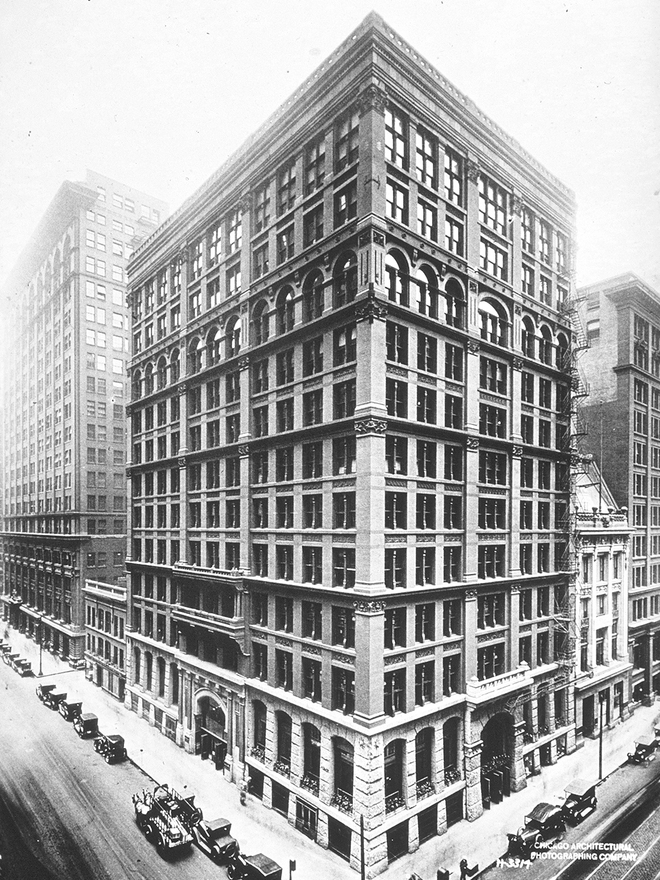– By Tom Schaffner
To learn the history of famous Chicago skyscrapers, you need to go back more than 100 years. Shortly after the Great Chicago Fire in 1871, the City of Chicago passed new laws that outlawed the use of wood in new building construction. This preventative measure paved the way for heat resistant materials such as brick, limestone, marble, and Terracotta tile, all of which found new popularity among local architects and building designers.
These fireproof materials lead to a boom in new construction projects, especially high-density buildings in the Loop that housed a variety of tenants. These multi-story buildings featured massively thick load-bearing walls, walls that supported the weight of the entire building above it. Because brick or stone can only support so much weight, buildings built with load-bearing walls often topped out at around 10-12 stories.
In 1884, at the height of this building boom, architect and engineer William LeBaron Jenney was commissioned by the Home Insurance Company of New York to design its regional headquarters in Chicago at the corner of Adams and LaSalle Streets. Stepping out of the load-bearing wall architectural box, Jenney supported the building with a fireproof steel frame that resembled a skeleton around the entire construction. Because the frame dispersed the weight of the building, it was much lighter than its load-bearing cousins and, thus, was able to be built taller. This innovation, experts acclaimed, made the Home Insurance Building the world’s first modern skyscraper and Chicago home to the world’s first skyscraper.
Since then, the city has become world-renowned for its architectural achievements and, of course, its vast array of famous Chicago skyscrapers.
We’ve put together a list of our favorite famous Chicago skyscrapers:
- Fisher Building
- Marquette Building
- Monadnock Building
- Old Colony Building
- Rookery Building
- Lake Point Tower
- Chicago Hilton
- Merchandise Mart
- Old Chicago Main Post Office
- Willis Tower
- Aon Center
- 875 N. Michigan Ave.
- Marina City
- Tribune Tower
- Wrigley Building
We’ve divided our list of famous Chicago skyscrapers into three groups —Pioneers, Record Breakers and Icons.
Pioneers
Fisher Building
Completed in 1896 by D.H. Burnham and Company, the Fisher Building survives today as the oldest building in Chicago that is more than 18 stories high (it has 20 floors). Its neo-Gothic design, notable for the many carvings and sculptures that decorate its terra cotta facade, was worthy of national recognition — it was listed on the National Register of Historic Places in 1976. Built near the Loop’s Financial District, the building is one of the few in the area that is devoted entirely to residential apartments.
Marquette Building
Built in 1895, the Marquette Building is an early steel-frame skyscraper with masonry cladding. The building is named after explorer Father Jacques Marquette who, in 1674, was the first European settler in Chicago. What makes Marquette one of the most famous Chicago Skyscrapers is its ornate, two-story lobby which features four intricate Tiffany mosaics that depict events in Marquette’s life, including his exploration of Illinois, Native Americans he met along the way and a scene that depicts his burial. Designed by the architectural firm of Holabird & Roche, the building was designated a National Historic Landmark in 1973.
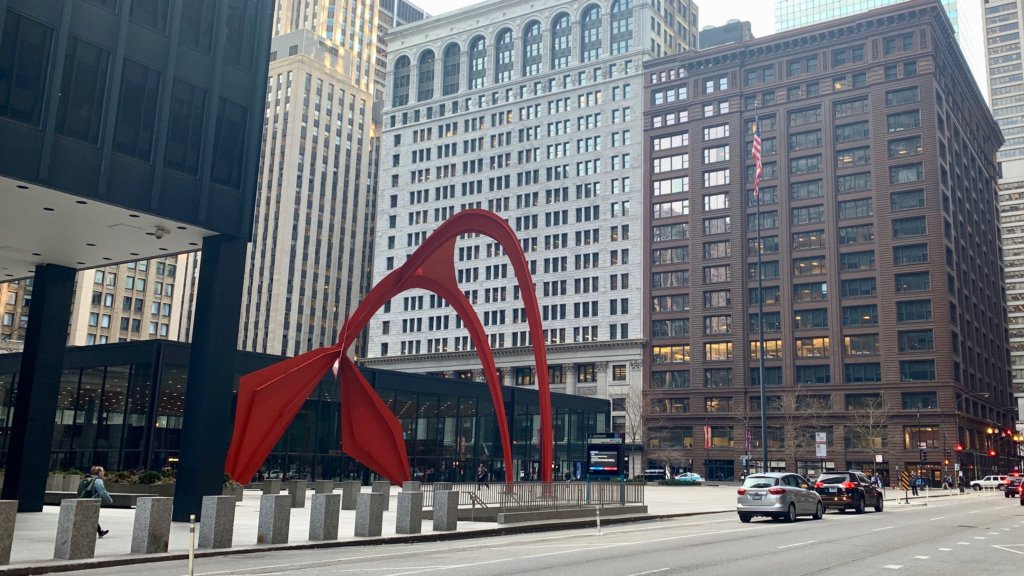
Monadnock Building
Named after a mountain in New Hampshire, the Monadnock Building was built as two separate buildings that were later joined into a single building. When it was completed in 1891, the north half of the building was, at 16 stories, the tallest load-bearing brick building in the world —the walls at its base are 6 feet thick. When the south half of the building was completed in 1893, the Monadnock Building became the largest office building in the world, featuring more than 1,200 offices and occupancy of over 6,000 workers. Known for its decorative aluminum spiral staircases and bay windows, the Monadnock Building is both a famous Chicago skyscraper and National Landmark.
Old Colony Building
Built in 1893, the Old Colony Building, named in honor of the original Plymouth Colony founded by the Pilgrims, is a 17-story structure with beautiful curved bay windows on each of the four corners of the building. Originally built as an office building, the Old Colony was converted to an apartment building in 2015 and today mainly serves as housing for college students attending school in the South Loop neighborhood. It was placed on the National Register for Historic Places in 1976.
Rookery Building
One of the most historically significant buildings and most famous Chicago skyscrapers, the Rookery was designed by the architecture firm of Burnham & Root and features a combination of load-bearing walls and an interior steel frame. It was completed in 1888. The centerpiece of the building is a stunning two-story lobby, redesigned in 1905 by Frank Lloyd Wright, with a skylight and a mesmerizing oriel staircase that visibly climbs to the 12th floor from the second. Named a National Historic Landmark in 1975, the Rookery Building also has been used in several motion pictures including “Home Alone 2” and the “Untouchables.”
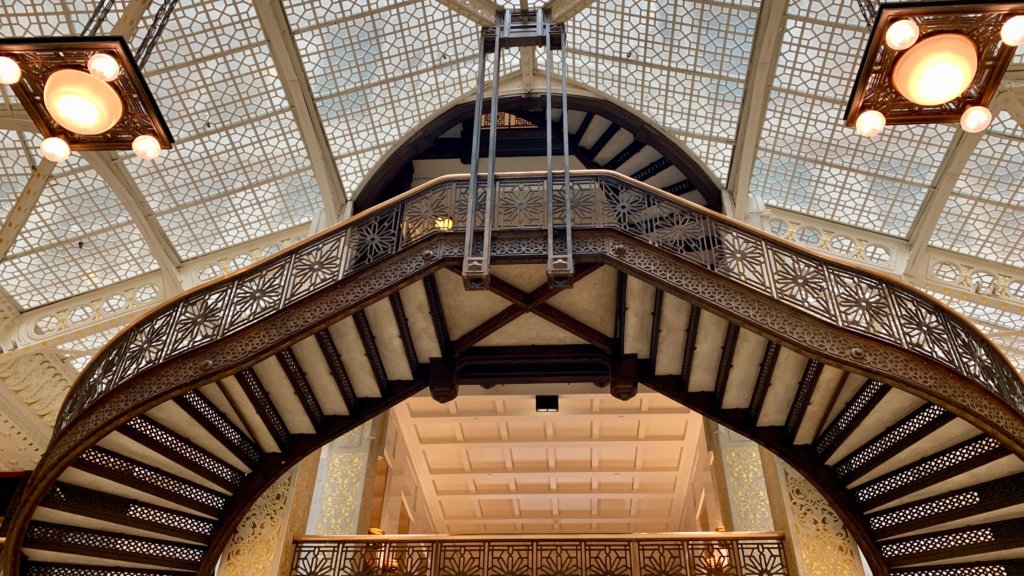
Record Breakers
Lake Point Tower
This sleek, graceful, 70-story Mies van der Rohe-influenced structure was completed in 1968 and was the tallest apartment building in the world when it opened. Located adjacent to Navy Pier, Lake Point Tower is the only skyscraper in Chicago that sits on the east side of Lake Shore Drive and, given the city’s reluctance to approve any shoreline construction for environmental reasons, it is likely to stay that way for the foreseeable future. According to the developers, the shamrock shape of the building ensures that every unit in the building has a view of Lake Michigan.
Chicago Hilton
When it opened in 1927, the Chicago Hilton (formerly the Stevens Hotel) offered 3,000 rooms for guests and was, unequivocally, the largest hotel in the world. The property offered a wide variety of services and features for guests, including a miniature golf course, a concert music library, a 1,200-seat theater, a 7-chair barbershop and a small hospital with an operating room. In the past couple of decades, the hotel has been used as a backdrop for several Hollywood movies, including “The Fugitive,” “My Best Friend’s Wedding,” “U.S. Marshalls” and “Road to Perdition.”
Merchandise Mart
Built by retailer Marshall Field so he could consolidate his warehouses into a single facility, the Merchandise Mart was the largest building in the world (4.2 million square feet) when it opened in 1930 on the north bank of the Chicago River. Spanning two city blocks, the Merchandise Mart is renowned worldwide for the vast number of furniture, fabric and decorator designers that operate showrooms throughout the building. In the last several years, the building also has come to be known for “Art on the Mart,” the largest digital art projection program in the world.
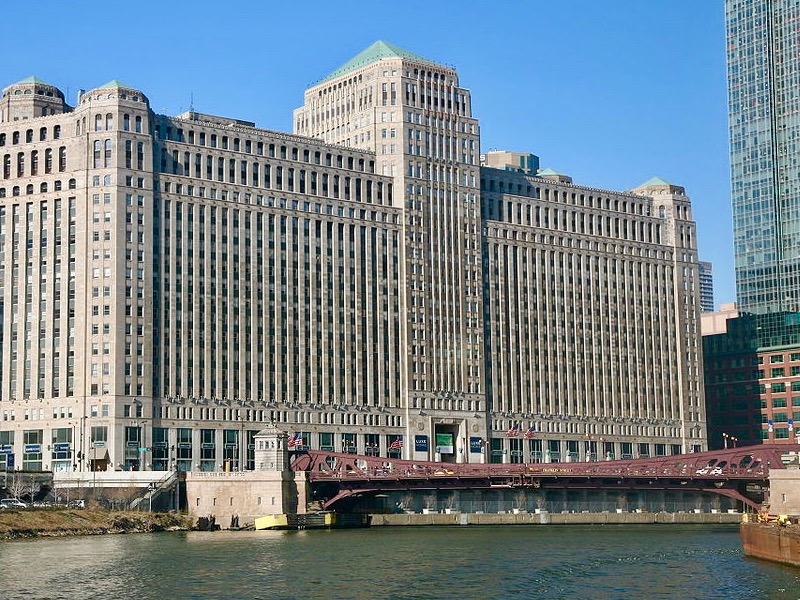
Old Chicago Main Post Office
Spanning 60 acres (2.5 million square feet), the 12-story Old Chicago Main Post Office — the one that straddles the Eisenhower Expressway with a huge hole for cars to drive through — was the largest post office in the world when it was expanded in 1932 to accommodate Chicago’s booming mail needs (primarily catalogs that were distributed by Montgomery Ward, Spiegel and Sears). When the city built a new, more efficient facility in 1997, the Old Main Post Office sat idle and unused for more than 20 years. Today, it has been redeveloped and is now home to such companies as Walgreens, Uber, Ferrara Candy and PepsiCo.
Willis Tower
When the 110-story Willis Tower (formerly Sears Tower) was completed in 1973, it became the tallest building in the world, a title it would hold for 25 years. Today, one of the most famous Chicago skyscrapers is the third tallest building in the United States and 23rd tallest building in the world. Although Sears vacated the tower in 1995, it retained the naming rights until it sold the building in 2003. When London-based insurance broker Willis Group Holdings leased more than 140,000 square feet of office space from the new owners, they obtained the naming rights and on July 16, 2009 renamed the tower.
Icons
Aon Center
The 83-story Aon Center is the fourth tallest building in Chicago, standing in line behind Willis Tower, Trump Tower and the all-new Vista Tower. A sleek, minimalist tower clad entirely in white granite, the Aon Center takes its name from the Aon Corporation (insurance) which became the building’s primary tenant in September 2001. Completed in 1973, the building was built by the Standard Oil Company of Indiana and for many years was affectionately known as “Big Stan.”
875 N. Michigan Ave.
Formerly known as the John Hancock Center), 875 N. Michigan Ave. is one of the best known — and most photographed — famous Chicago skyscrapers. A gradual taper of the building’s frame from its base to the top floor along with its distinctive X-bracing on the exterior walls of the building make it easy to identify when viewing the city’s skyline from a distance. When the building topped out on May 6, 1968, it was the second tallest building in the world; today it is the fifth tallest building in Chicago.
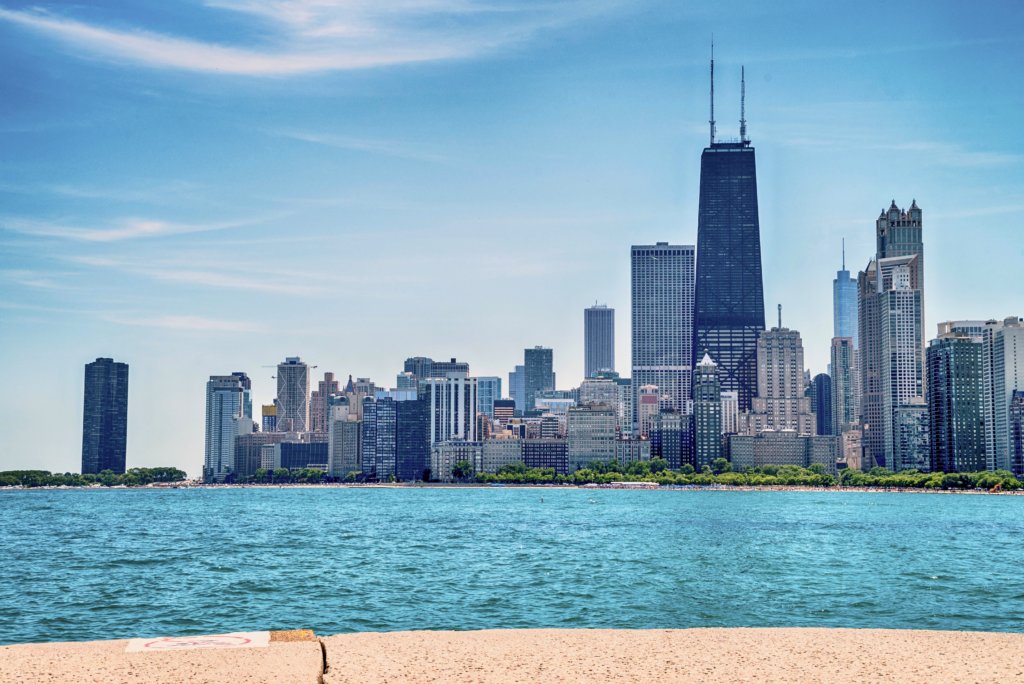
Marina City
In 1963, when the two towers of Marina City opened on the north bank of the Chicago River, Chicagoans thought that architect Bertrand Goldgerg’s futuristic skyscrapers were something right out of the “Jetsons.” The complex was designed to be a “city within a city” — it included a movie theater, gym, swimming pool, ice rink, bowling alley, stores, restaurants, a small adjacent office building and a marina. With 450 apartments in each tower, Marina City was the first post-war high-rise complex built in the United States and it is widely credited with beginning the residential renaissance of inner city America.
Tribune Tower
In 1922, the Chicago Tribune hosted an international design competition for its new headquarters to mark the newspaper’s 75th anniversary. The newspaper challenged architects worldwide to design “the most beautiful and distinctive office building in the world.” The winning entry was a neo-Gothic design by New York architects John Mead Howells and Raymond Hood that featured flying buttresses near the top. Construction on the Tribune Tower was completed in 1925 when the building topped out at 463 feet. The Tribune sold the building in 2018 to developers who plan to convert it into condominiums,
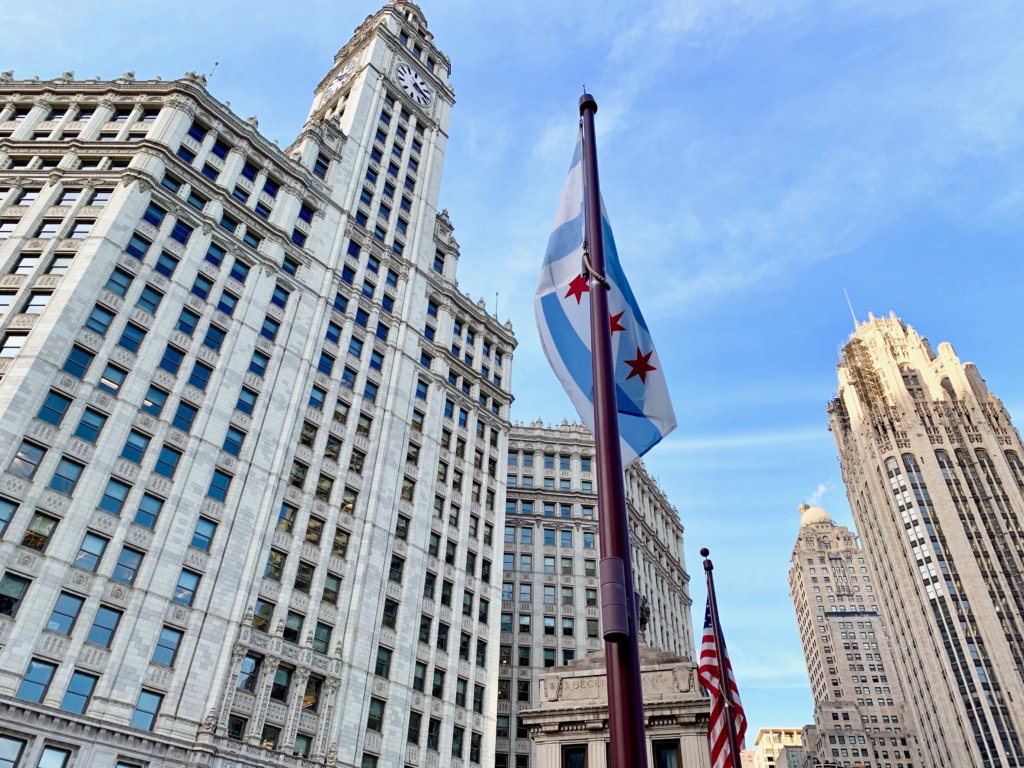
Wrigley Building
Built by the William Wrigley Jr. Company (chewing gum) from 1921-24, the Wrigley Building was the first Chicago skyscraper to be constructed north of the Chicago River (made possible by the 1920 construction of the DuSable Bridge that spanned the river at its doorstep). The building is actually two separate towers — the 30-story South Tower and the 21-story North Tower — that are connected with walkways at ground level and the third and fourteenth floors. Clad with more than 250,000 pieces of terra cotta, the Wrigley Building looks stunning when the building is bathed in floodlights at night. The spire and clocktower of the Wrigley Building take their inspiration from the Giralda tower of Seville Cathedral in Spain.
Most of these skyscrapers and more beautiful buildings and structures can be seen on a variety of our Chicago city tours. If you’d like to learn more about what tour is right for you, please contact us!
Holder of two journalism degrees, including a masters from Northwestern University, Tom Schaffner is a native of the Chicago area and has spent nearly 50 years as a writer, editor, publisher and professional communications consultant. He was also the founder, editor, and publisher of the Chicago File, a newsletter for former Chicagoans. Tom is also the co-owner of L Stop Tours.
POPULAR TRIPS
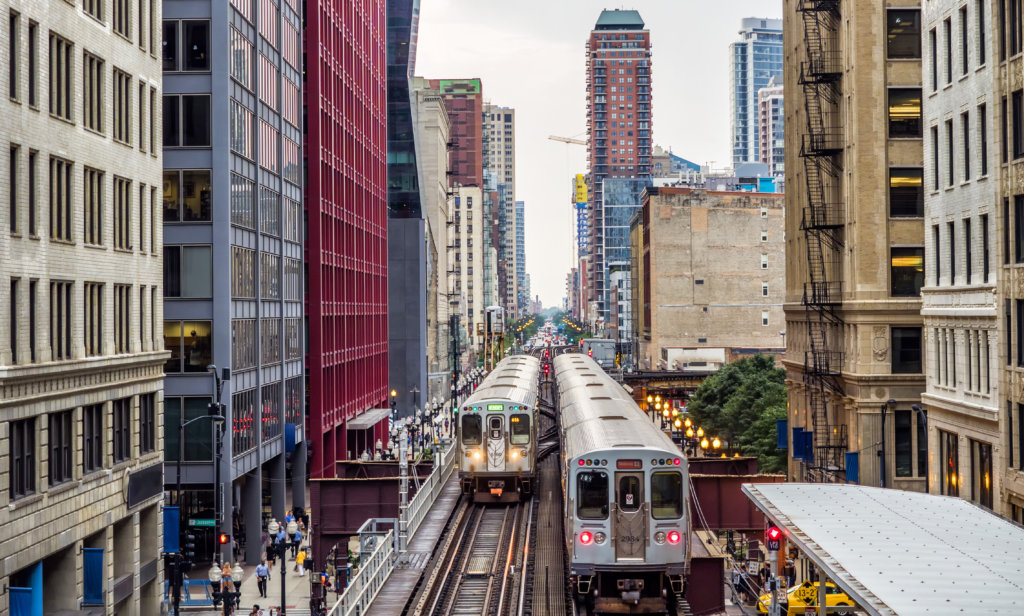
Duration: 3.5 hours
Price: Adult $65
- Tour price includes transit fees. Food/beverages purchased by guests.
- Tour begins and ends in the Loop.
- Walking distance: 1.5 miles

Duration: 3.5 hours
Price: Adult $65
- Price includes transit fees. Food/beverages purchased by guests.
- Tour begins and ends in the Loop.
- Walking distance: 1.1 miles
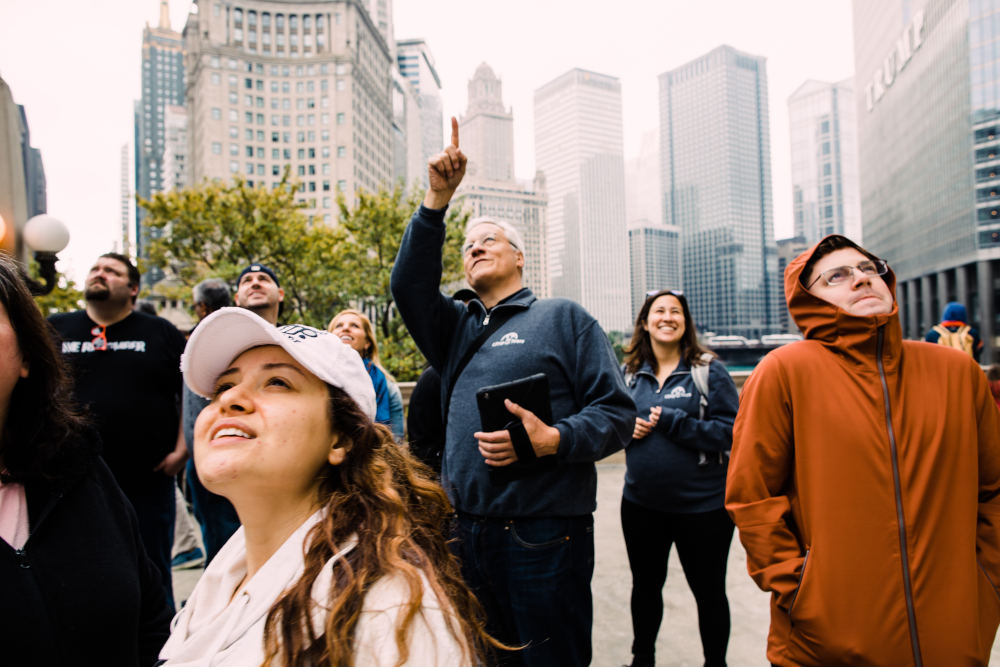
Duration: 3 hours
Price: Adult $65
- Tour price includes professional tour guide, train ride. Food/beverages purchased by guests.
- Tour begins and ends in the Loop.
- Walking distance: 1.5 miles
NEWSLETTER
Stay in the LOOP and subscribe to our monthly newsletter today!

